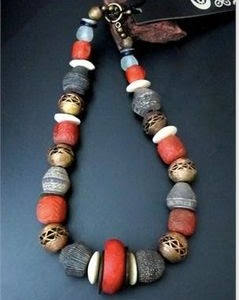Reinhard Maack rendering of the White Lady
Brandenburg Massif lies about 100km away from Spitzkoppe and hosts over 1000 bushman paintings scattered in caves and rock shelves. The most famous and intriguing are the image of the White Lady. The Brandberg is also Namibia's highest mountain.
The painting has long been an archaeological dilemma and several different hypotheses have been put forth to its origins, authorship and dating. It is now accepted to be a bushman painting dating back at least 2000 years
In 1917 topographer Reinhardt Maack and Alfred Hoffmann, a cartographer were surveying the Brandberg when they took shelter for the night under an overhanging rock. On awakening, Maack saw the rock painting and made a sketch of it and added a note to his dairy. “The Egyptian Mediterranean style of all its figures is surprising.“ This statement started the myth and controversy for over half a century.
The White Lady group is found in a cave known as “Maack Shelter” and depicts several human figures along with oryxes. The rock panel measures about 5.5m by 1.5m. And the White Lady is 39.5 cm by 29 cm.
This painting has also suffered from damages since if was first made public in the early 20th century. Decades of wetting the image on the rock face, only to get a better photograph, has caused considerable damage and cause the art to disappear more rapidly.
There have since been many other theories about her, as the White Lady is very detailed, and the assumption is that she is a medicine woman. She has white painted arms and legs or was wearing decorative attachments.
In this illustration, she has a bow in one hand and perhaps a goblet in the other running towards the oryxes. That gives an indication that it is a hunting scene. Apart from the shaman-lady, the other figures are either completely black or white as if she was the most prominent figure in the pictograph. One of the oryxes also has human legs.
Namibian oryxes
The rock art paint is in ochre, charcoal, manganese, hematite, with blood serum, egg white and casein used as binding agents. The natural dyes and colour combination is still visible in today's basket weaving and other decors.
The Brandberg site is a protected area and the viewing in the presence of an official guide.









No comments:
Post a Comment